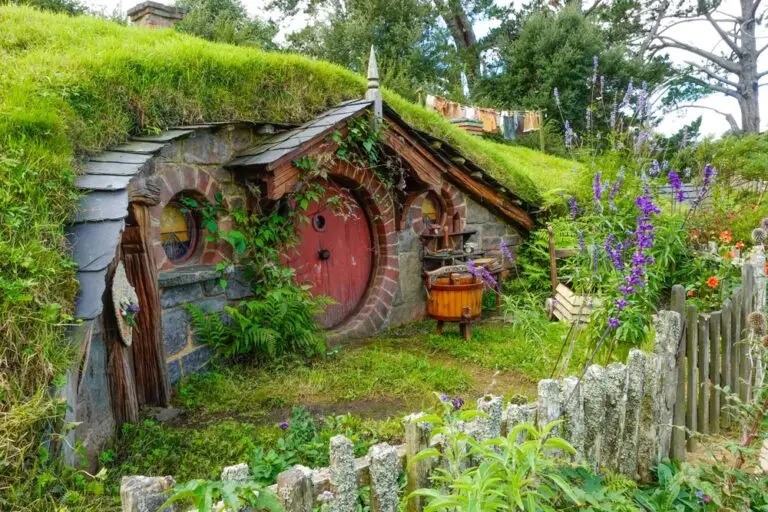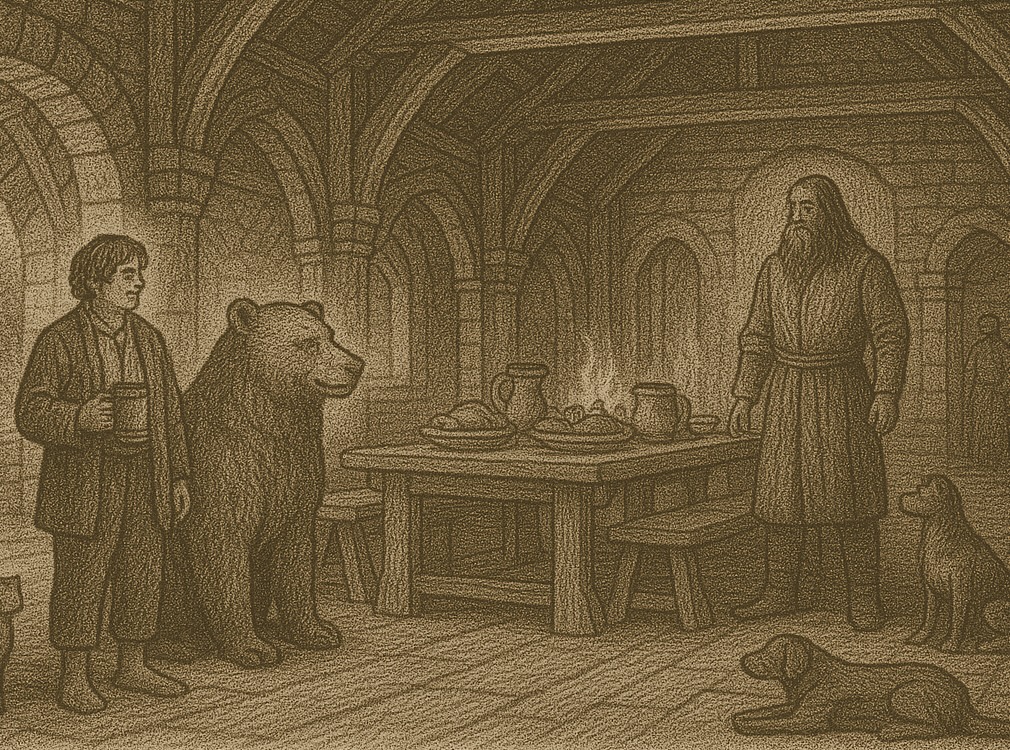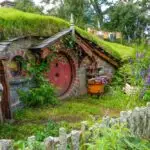
A Socialist reads the Hobbit Part 09 – Beorn

We are about halfway through the book and Bilbo, Gandalf and the dwarves have yet again lost their kit. They are now the other side of the Misty Mountains and need to get across Mirkwood to get to the Lonely Mountain. This gives the dwarves a problem because they don’t have any supplies. It also gives Tolkien a problem because he has to explain why the goblins don’t follow them in. And I have an unrelated problem that I will now start making reference to the films which hadn’t come out when I wrote the first 8 episodes. Bear with me.
Luckily the wizard has a plan. He knows somebody nearby called Beorn. But this particular individual is a difficult man to handle. He is likely to be spooked by the sudden arrival of a large number of dwarves. Luckily Gandalf has a cunning plan. He introduces the dwarfs one by one slowly over a period of time so that Beorn doesn’t realise what he is taking on by extending his hospitality.
This is done rather charmingly. It has the feel of a device from a fairy story. If it is I have no idea where it comes from. I think this one has to be credited to Tolkien himself. Nice one JRR.
And this is the most fairytale like bit of the whole book. Beorn is a big man who can change into a bear. This gives him a leadership role in the local bear community and in fact on hearing the dwarves’ story he leads a group of bears to confirm the details. This was changed in the film. They opted instead for making the bear form very large and fierce. I think they missed a trick here. Beorn works much better as a representative of his locality than as a one off. Beorn’s possé is composed of a mixture of different kinds of bear making it a pleasingly multicultural affair.
Beorn’s domestic arrangements are interesting, with dogs and horses employed as servants. Given that Beorn himself is half bear I think we can clear him of the charge of speciesism. Nonetheless there does seem to be a hierarchy in action here. The animals seem to be simply trained versions of standard animals with whom Beorn can communicate, so they are more like the animals in Doctor Dolittle than the talking animals in Narnia. Beorn is presumably able to talk to them – though we don’t see this going on – but the animals themselves are simply standard animals.
Beorn is completely autonomous and is free to decide on his policy to the visitors. He seems to have a backstory. There is an allusion to him having used to live in the part of the mountains now inhabited by the goblins, and that he has some issues with dwarves. His economy is self sufficient with honey production supplemented with foraging forming its basis. This direct control over the means of production enables his independent lifestyle. His suspicion of an influx of outsiders to disrupt this setup is understandable. Nonetheless once he has understood the true situation he is willing to ally himself with progressive forces and help the team in their project. This enables the dwarves to resupply and to get valuable intelligence on the next stage in their project. Beorn also blocks pursuit by the goblins solving the plot difficulty.
Beorn also gives us a taste of Tolkien’s interest in the Anglo-Saxons. His name is the Anglo-Saxon for bear, and his house resembles a building of the period. The fire is central and there is a hole in the roof for smoke to emerge. Gandalf uses this to send out multicolour smoke rings. I greatly prefer the more fun loving version of Gandalf we get in the Hobbit. Everything is hand made from local materials. I have a feeling that Beorn’s hall would be rather more recognisable as an example of William Morris’s Arts and Crafts movement than an actual Saxon one. In looking back to an ideal past Tolkein was very much fitting in with ideas current in his own time. As such it is of a piece with things like the mock Tudor facade of Liberty in Regent Street. I could easily imagine them stocking Beorn’s honey cakes even today. I think I have already justified my early misallocation of Tolkien as a socialist, but if challenged I would certainly quote this chapter as strong evidence of left-leaning sympathies. Nobody doubts that William Morris was both an enthusiast for the medieval and a socialist activist. It isn’t so often remembered that he was also a big fan of the ancient world as well, to the extent that he published a translation of some Icelandic sagas. I think Morris and Tolkien would have got on really well had their timelines been a bit more compatable.
I always think of Beorn’s hall as the epitome of the world of the Hobbit. I am not on tremendously good grounds in doing so. Beorn’s backstory is never fleshed out, and although we do see more of him later and get references to him in later books he remains very much a peripheral figure in the overall body of Tolkein’s work. Having created him he doesn’t seem to know what to do with him. But really there isn’t much drama to be had from such a character. Beorn enjoys a fulfilling life that is both beneficial to himself and harmless to those about him. He is able to look after himself, but poses no threat to anyone who leaves him in peace. I am reminded of the old prayer, dear God please make all the bad people good, and all the good people interesting. Beorn is not uninteresting, but he is not really the stuff of epic.
One last comment on this chapter. There is a tiny detail which would completely escape the notice of younger British readers and people from other countries. Note how all the housekeeping is done without the dwarves or the hobbit seeing what is being done. This was one of the miraculous features of seaside bed and breakfast hostels. These were typically family businesses operated by the owners themselves and their relatives. Their ability to carry out the routine activities such as making the beds or cleaning out the linen without any contact whatever with their paying guests was always a source of wonder. I have a feeling that the way Beorn’s household managed to do the same thing was probably a private joke on the part of JRR.
